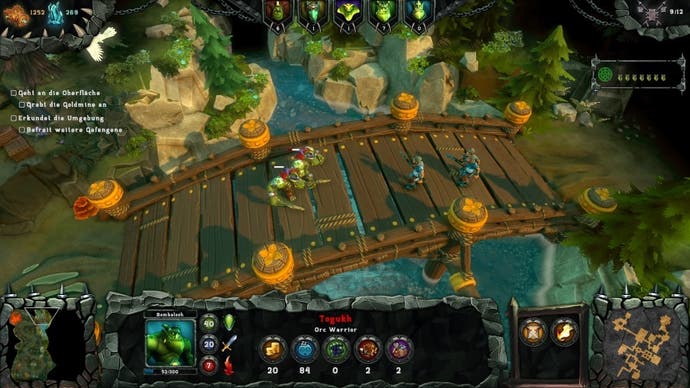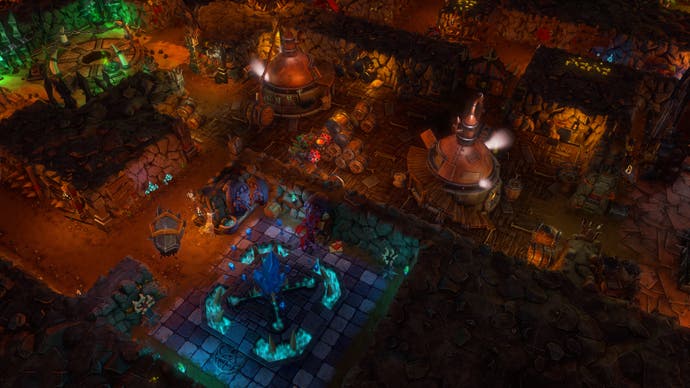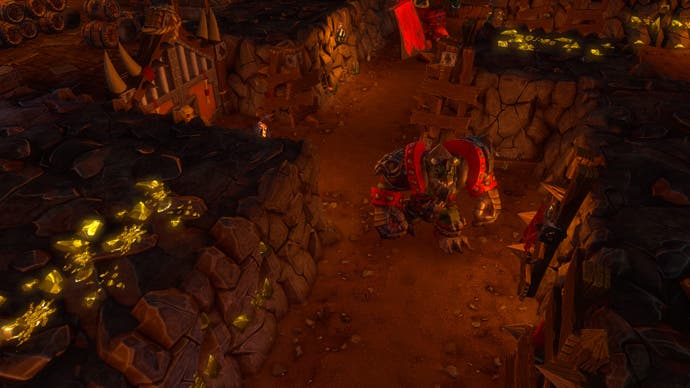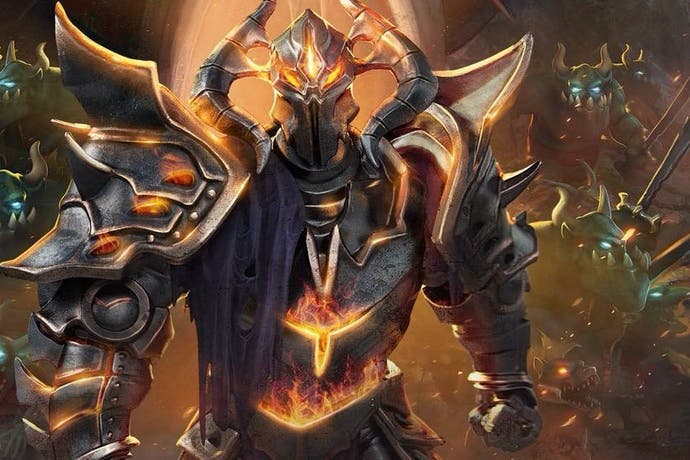Dungeons 2 review
Down, down, deeper and down.
The fact that EA so completely botched its revival of Dungeon Keeper by bringing back the beloved PC hit as a craven F2P casual mobile game has been a boon for indie developers. There's a hungry audience out there, craving dungeon management satisfaction, and there are now multiple candidates hoping to fit the bill.
Dungeons 2 has something of a head start, since it's a sequel to a 2011 game that sadly failed to live up to its promise. The original Dungeons took obvious inspiration from Bullfrog's classic, but added a weird twist: you weren't trying to kill the adventurers who ventured into your lair, but to keep them challenged and thrilled long enough to build up their soul force, which you could them harvest in order to level up your traps and creatures.
It was a nice concept, sloppily executed, but it's been completely abandoned for the sequel. The result is a game that is much closer in style to Dungeon Keeper, yet still has a few new twists of its own.
The core gameplay is now more familiar than ever. You start with a throne room, a pit from which you can summon creatures (and into which you can dispose of them, should you wish) and a map filled with earthen walls and seams of gold ready to be mined out. Set your minions - called Little Snots - to work, and slap them with a right click to motivate them. Clear a room-sized space, choose what you'd like to build there and start to craft the perfect lair.

At first, it's exactly how you'd want a Dungeon Keeper inspired game to be. You build a brewery to keep your creatures happy, workshops to research new things to build, and traps to slow down and kill unwary intruders. You no longer have to try and keep those invaders alive - simply killing them as quickly as possible is once more your goal - and while the result is hardly original, it certainly scratches its intended itch.
Visually, the game has improved dramatically from the 2011 original, with a much more stylised look, more characterful animations and a generally more solid and robust feel. The writing is also much more confident. The first game tried to mimic Dungeon Keeper's sardonic wit and fell short. The new script is genuinely funny, for the most part, and mixes up Douglas Adams style word play with fourth-wall breaking comments on games in general. It becomes a little grating at times, but is mostly a pleasure.
The big twist for Dungeons 2 is that you're no longer confined to the Underworld. Your goal now is to amass an army capable of turning tradition on its head, as you exit via the same portal used to invade your realm, and attack the sickly sweet fantasy kingdom on the surface. Once above ground, control switches to a click-drag RTS style and it's only by wreaking evil havoc in the human world that you earn the Evil points needed to level up your dungeon.
It's an idea with both benefits and pitfalls. On the plus side, it makes Dungeons 2 more than just a cover version of Dungeon Keeper, and allows for some refreshingly different story-based campaign missions. The downside is that the game gets in a bit of a tangle trying to accommodate both the management simulation and real-time strategy aspects, along with their different control styles.

While Dungeons 2 is enticing in the broad strokes, it does start to fray at the seams when it comes to the finer details. Any task that requires a more nuanced approach, such as selecting specific units or employing a tactic that involves anything other than just flinging everything you have at the enemy, becomes a bit of a fumble. For example, magic books can bestow permanent ability buffs on a creature, but dropping the book on the one you want is clumsier than it should be. Eventually you stop trying to be clever, by giving the armour buff to your rock-throwing trolls, and just accept that whichever creature it lands on will get the benefit.
This fussiness is consistent across the game, with a busy and sometimes confusing UI, important gameplay features and commands poorly explained and a lumpy structure that hides the many upgrade paths behind layers of icons that are identical in appearance but different in function. The icon to research a new room is the same as the icon to build new rooms, for instance.
The game's other stumbling block is that there's just not that much to it. Apart from the Little Snots, who play no part in combat and exist solely to dig and ferry items around, there are only four creature types to summon: goblins, orcs, trolls and serpent-like ranged fighters called Naga. Each can be evolved into something different a few specialisms through training, but it still doesn't leave you with much room to vary your approach and the inability to quickly select certain unit types turns the overworld battles into incoherent scrums more often than not.
Most maps even have seams of gold laid out in ready-made corridors and chambers, all but telling you how to lay out your lair. Even if you ignore them, there aren't enough room types to require much thought or planning, nor does the enemy AI require much in the way of tactics. They simply make a beeline for your dungeon heart, and clusters of traps around the entrance points will take care of most incursions before they become a problem. Even on the smallest maps it's all too easy to find yourself with acres of empty space and not enough useful rooms to fill it with. Most resource management games reach a plateau eventually, but this one hits it sooner than most.

This is most apparent in the single player Skirmish, the only offline mode to allow open-ended play. Freed from the restrictions of the Campaign, which slowly introduces the various gameplay features across a series of standalone missions, it becomes clear just how soon you can unlock everything and dominate the game.
Adding some longevity are the multiplayer options, online and LAN, played across five maps. Each one pits up to four players against each other, building their own dungeons underneath a shared overworld map. Some, such as King of the Hill, are based around using your creatures to seize and hold areas of the overworld for victory. Others, like Deathmatch, require you to venture into other players' dungeons to finish them off. Sadly there haven't been enough players to give the online elements a thorough test pre-release. It's an interesting take on multiplayer strategy, though.
As a follow-up to 2011's Dungeons, this sequel is much easier to recommend, fixing many of the problems from that game and introducing new ideas that fit better with the genre. It's still only a partial success, however, and between the fussy menus and interface, and the speed with which you'll find yourself resorting to trudging repetition, this still falls short of the game it could be.

